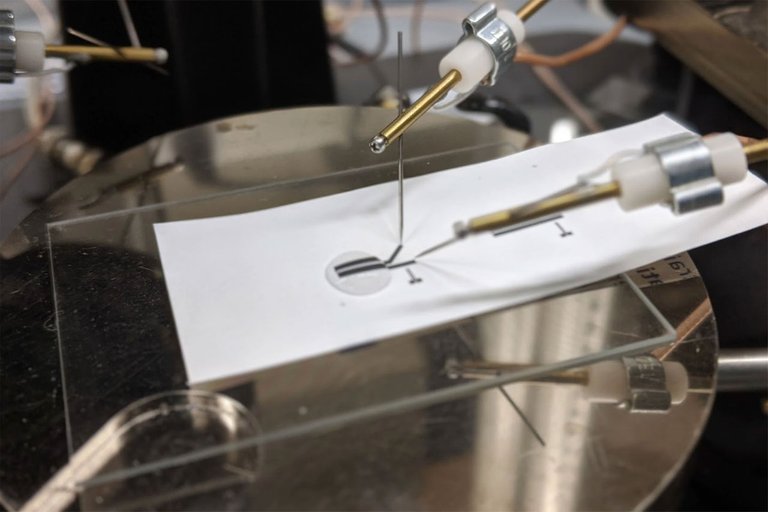Recyclable transmitter printed on paper developed.

The technological advances that are arising in our daily lives are really wonderful, because they seek in one way or another to improve our quality of life and the environment, such is the case of the development of a transmitter printed on paper and is fully recyclable.
One of the main problems or drawbacks of electronic devices is their difficulty to be recycled, which is why at present the development of these devices has many legal regulations, as many of its components once their useful life comes to an end are very difficult to recycle or reuse. That is why researchers at DUKE University have developed what they say is the first electronics printed on paper and fully recyclable, it is a transmitter that at the end of its useful life its components can be decomposed into their primary materials with which it was formed, this thanks to the nanocellulose and conductive inks.
The researchers state that they have been able to develop this electronic component thanks to nanocellulose. Nonocellulose comes from plants and is also obtained from wood waste, its main use is in the production of biodegradable packaging and now with this new development it is being used for the production of electronic circuits, it is important to mention that previously it was also used in cars.
This important development was achieved by combining nanocellulose with printable ink until a dielectric ink was obtained. The resulting ink was again combined with a conductive ink made of graphene and carbon nanotubes, resulting in a carbon ink that has the ability to conduct electricity and can be printed on a piece of paper with jet printing. From this ink they were able to develop a transistor and they state that other electronic components can be developed as well.
Similarly, the developers or researchers who created this transistor stated that it worked properly for six months and as it has the ability to recycle it, it was only a matter of recovering its materials to be reused, for the moment it is only a proof of concept because it remains to see the feasibility of evaluating its production costs in large quantities and the maximum life span that can be achieved, as well as the cost of recycling.


0
0
0.000
Hi @carlir
Excellent article friend, you always bring us important information about technological advances.
This transmitter comes to give an excellent choice both in its usefulness and in its sustainability, I hope that the final results related to manufacturing and recycling costs will be attractive and cost effective.
Have a great day! regards.
Hi @janettyanez, let's hope that the results are the most expected and that they can be implemented quickly, because it will also bring solutions to the environment.
Thank you for your comment.
Your post has been voted as a part of Encouragement program. Keep up the good work!
Use Ecency daily to boost your growth on platform!
Support Ecency
Vote for Proposal
Delegate HP and earn more
Hello Professor @carlir
It is good to know this data "it worked properly for six months and as it has the capacity to recycle it, it was just a matter of recovering its materials to be reused", it is impressive when environmental approaches are used with science and technology in the development of this kind of tools. Thanks for socializing this kind of content.
Best regards, be well.
Hello friend @lupafilotaxia, it really is an important advance because it will not impact the environment and can be reused again for its purpose, based on this its production costs will be low.
Thanks for your comment.
Greetings dear @carlir very interesting your article, it is good to know that there are already technological advances that come to counteract a little environmental pollution. undoubtedly it will be very profitable and less expensive to make these transmitters with recyclable material. These small but important advances will serve to open the doors to the recycling industry.